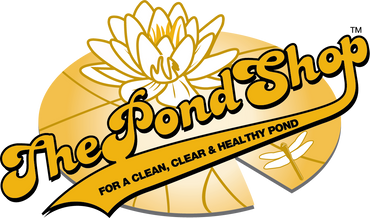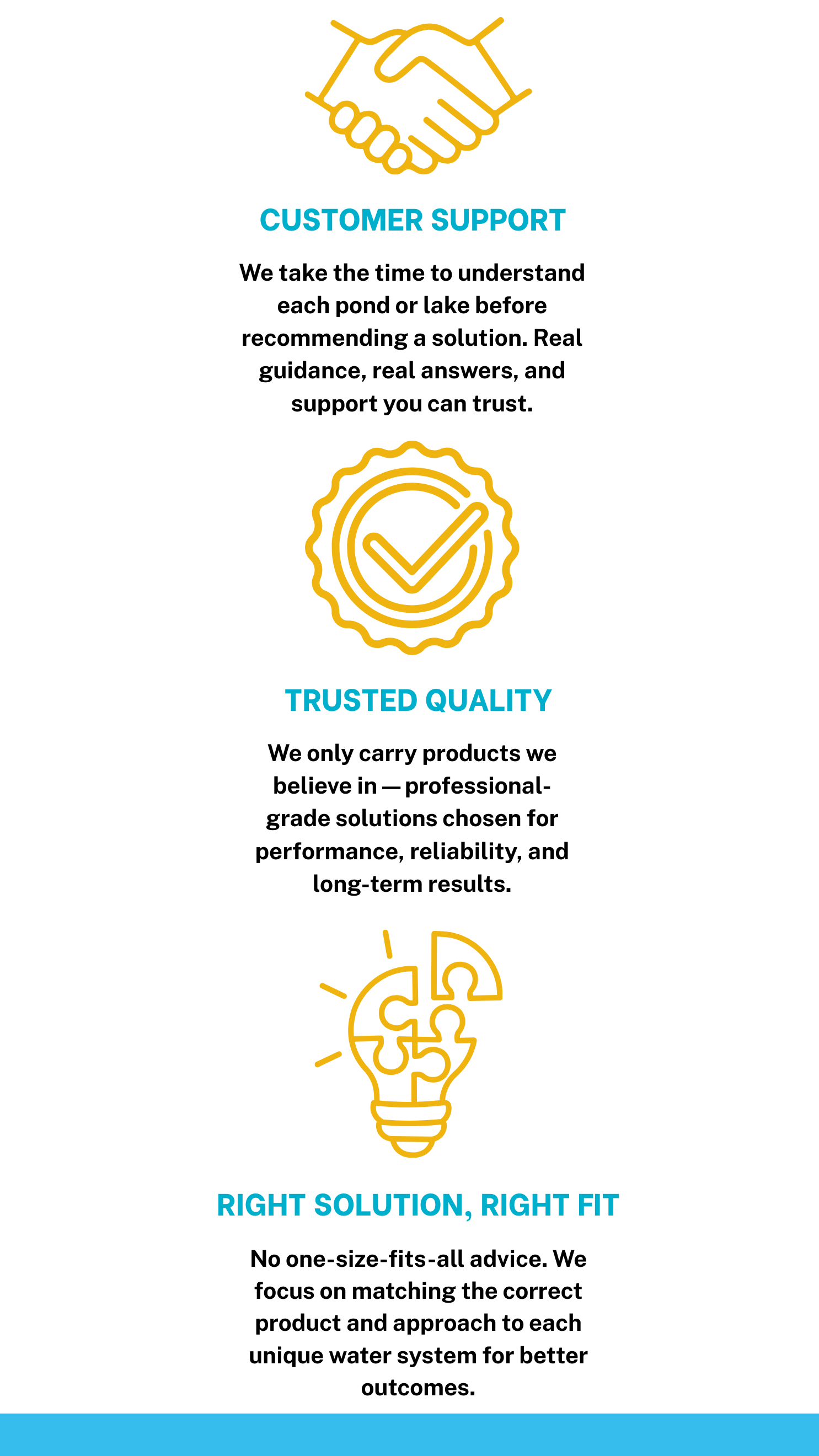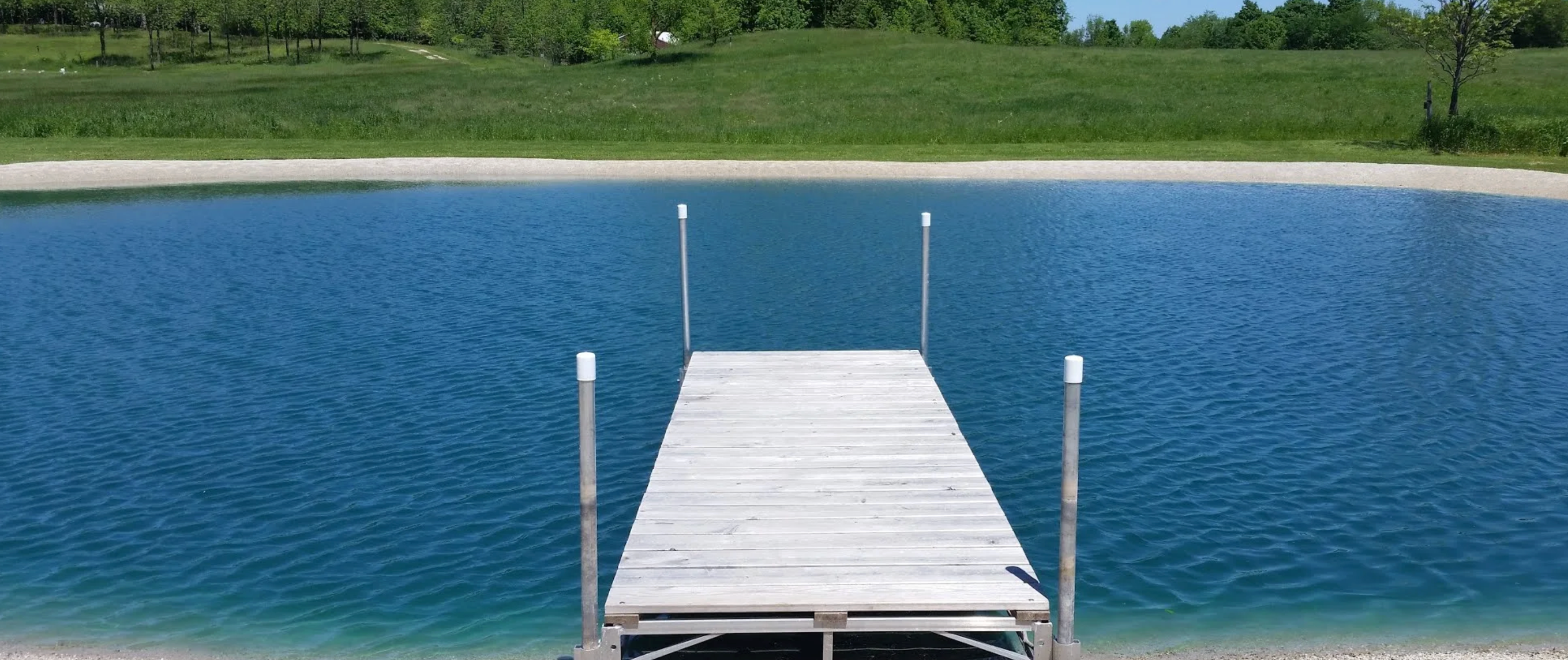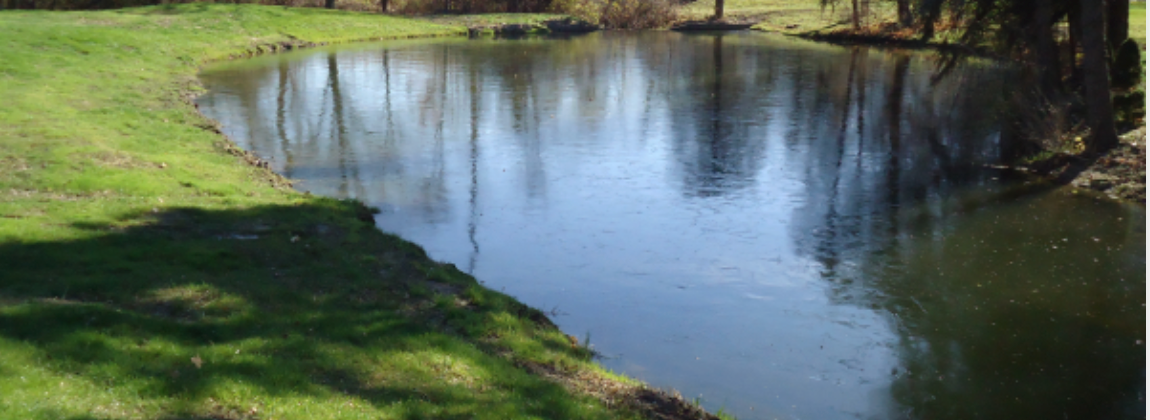Duckweed

Duckweed can be recognized by its small, single or grouped, round to elliptical-shaped clover-like floating leaves, with a root that hangs from the underside of the plant. Duckweed and Watermeal are the smallest aquatic plants known. Duckweed reproduces by budding and fragmentation. These minute plants serve as food for numerous organisms, they are especially important as a good source for waterfowl. While these plants are small, they can reproduce prolifically and quickly cover pond surface when growing conditions are right. A duckweed infestation can block sunlight from reaching deeper parts of the pond, preventing underwater plants from photosynthesizing and producing oxygen. In turn, that lack of oxygen can stress or kill fish.
Prevention
These plants require a lot of nutrients to grow, so typically they are found in nutrient-rich environments such as ponds that receive drainage from farm fields, excessive runoff, septic systems, lawns and golf courses. The bottom sediments of infested ponds are often very mucky and nutrient rich. To prevent its overabundance it is necessary to reduce fertilizer application near the pond, maintain septic systems properly, redirect nutrient-rich runoff away from the pond and maintain a vegetative buffer strip around your pond. If the excess of nutrients are not addressed, plant overgrowth will always be present and it will need to be constantly managed.
Duckweed can be spread from one pond to another by humans, wildlife, pets, and birds. The small plants stick to the sides of boats, or lodge in the feathers of birds swimming in infested waters. When the boat enters a new body of water or the birds migrate, plants can go with them.
Biological Control
Beneficial Bacteria Products and enzymes such as PZ-900 feed on nutrients in the water making them unavailable for plant growth. Reducing nutrients can help prevent invasion.
Physical/Mechanical Control
Physical control of duckweed is usually accomplished by netting or raking the plants off the pond and then disposing of plant material away from the pond so that the wind or runoff cannot transport it back into the water. Physical removal along with chemical control and a reduction of nutrients entering the pond will maximize success.
Surface Aeration has also been used as a mechanical approach to hinder duckweed proliferation. Duckweed prefers to grow in stagnant water, aerators will disrupt the surface of the water and limit the growth of these plants to the sides of the pond where they can easily be removed using nets or a rake. Furthermore, the added oxygen will accelerate the decomposition process of nutrients that feed pondweeds and algae during the summer months.
Chemical Control
Sonar AS & Sonar RTU, Reward, Tribune Clipper SC, have been proven successful in treating Duckweed. A nonionic surfactant such as Cygnet Plus should be mixed in solution with specific herbicides when plants are treated.
* Sonar AS & Sonar RTU are ready-to-use products and do not require a surfactant such as Cygnet Plus for proper application.
Sonar AS is long lasting systemic herbicide ideal for water bodies with minimal flow or discharge. Simply mix Sonar A.S. with water and pour in different spots around the pond.
Sonar RTU (Ready-To-Use) is a long-lasting, systemic, easy to use herbicide. Sonar RTU does not require mixing, it can be applied directly from the bottle by simply pouring into multiple locations around the water body.
Clipper SC offers fast and selective control of hard to kill submerged pond weeds, Chara, and Filamentous algae. Clipper SC was nominated as leader in its class for unrivaled control of of aquatic weeds and algae. Clipper SC dissipates quickly from the water and does not accumulate in the sediment.
Reward and Tribune are both broad spectrum, rapid-acting, contact herbicides ideal for use on small bodies of water or small weed patches. Successfully control a broad range of submersed, floating and emergent weeds in lakes, ponds, and drainage ditches. Rapidly absorbed by foliage, Reward and Tribune herbicides begin to work immediately on contact.
Cygnet Plus is a nonionic wetting agent, sticker, activator, and penetrant all in one. Cygnet Plus Increases the effectiveness of herbicides uptake into the plant tissue.





